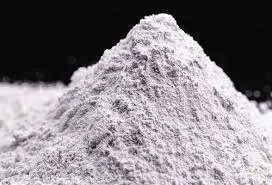
сеп. . 24, 2024 09:39 Back to list
Properties and Applications of Hydroxypropyl Methyl Cellulose in Various Industries
The Significance of Hydroxypropyl Methyl Cellulose (HPMC)
Hydroxypropyl Methyl Cellulose (HPMC) is a semi-synthetic polymer derived from cellulose, a natural polymer found in the cell walls of plants. It is widely recognized for its versatile properties, making it an essential ingredient in various industries, including pharmaceuticals, food, construction, and personal care products.
Chemical Composition and Properties
HPMC is a derivative of cellulose, wherein hydroxyl groups in the cellulose structure are substituted with hydroxypropyl and methyl groups. This modification enhances its solubility in water, enabling it to form gels and films. The properties of HPMC can vary based on its degree of substitution and molecular weight, which can be tailored to meet specific needs in different applications. The chemical formula of HPMC is not fixed, as it can be produced in various forms with different molecular weights and substitution patterns.
Applications in Pharmaceuticals
One of the most significant uses of HPMC is in the pharmaceutical industry. It serves as a tablet binder, coating agent, and thickening agent in various formulations. Its gel-forming ability makes it an excellent medium for controlled drug release, improving the bioavailability of certain compounds. Moreover, HPMC is considered safe for human consumption, which is paramount in pharmaceutical applications. Its non-toxic and biocompatible nature makes it suitable for both oral and topical formulations.
Uses in Food Industry
hydroxypropyl methyl cellulose cas

In the food industry, HPMC acts as a food additive that enhances texture, stability, and moisture retention. It is commonly found in gluten-free baked goods, providing structure and chewiness that would otherwise be lacking due to the absence of gluten. Furthermore, HPMC’s emulsifying properties are useful in salad dressings, sauces, and dairy products, where it helps to stabilize mixtures, ensuring uniform consistency.
Construction and Cosmetic Applications
Beyond food and pharmaceuticals, HPMC is widely used in the construction industry as a thickener and water-retaining agent in cement, mortars, and adhesives. Its properties improve workability and extend the open time of mixtures, making construction processes more efficient.
In cosmetics and personal care products, HPMC is employed as a thickening agent, film-former, and stabilizer in lotions, shampoos, and creams. It not only enhances the texture but also contributes to the product's overall stability, ensuring that the constituents remain well-blended over time.
Conclusion
Hydroxypropyl Methyl Cellulose's diverse functionalities make it an invaluable ingredient across multiple sectors. From its role in improving drug formulations and food products to its applications in construction and cosmetics, HPMC demonstrates versatility that is backed by a solid safety profile. As industries continue to evolve and demand innovative solutions, HPMC will remain a critical compound in addressing these challenges, signifying its relevance for many years to come. The ongoing research and development in modifying HPMC's properties promise even more tailored applications, reinforcing its stature as a cornerstone of modern materials science.
-
Versatile Hpmc Uses in Different Industries
NewsJun.19,2025
-
Redispersible Powder's Role in Enhancing Durability of Construction Products
NewsJun.19,2025
-
Hydroxyethyl Cellulose Applications Driving Green Industrial Processes
NewsJun.19,2025
-
Exploring Different Redispersible Polymer Powder
NewsJun.19,2025
-
Choosing the Right Mortar Bonding Agent
NewsJun.19,2025
-
Applications and Significance of China Hpmc in Modern Industries
NewsJun.19,2025







